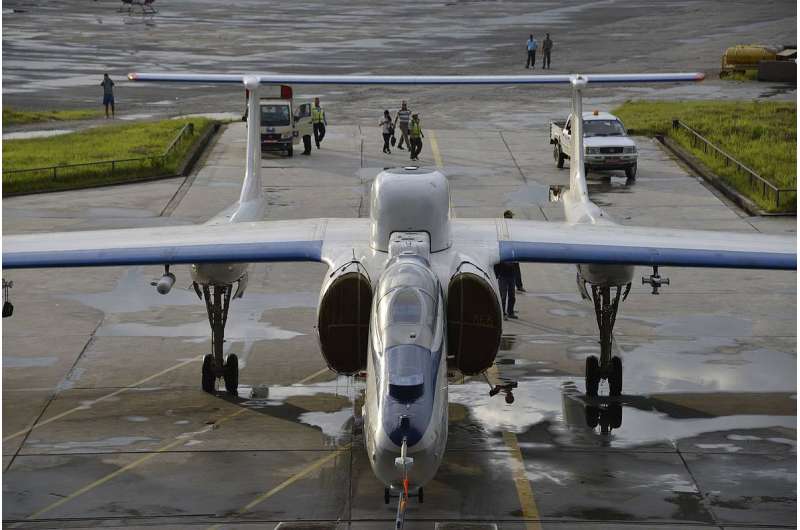High altitude research aircraft explores the upper levels of the Asian Monsoon

The Asian Monsoon System is one of the Earth's largest and most energetic weather systems, and monsoon rainfall is critical to feeding over a billion people in Asia. An international team of scientists led by the Alfred Wegener Institute, Helmholtz Centre for Polar and Marine Research (AWI) is now conducting the first-ever scientific mission to the upper levels of the monsoon system, using a high-altitude research aircraft flying out of Nepal. The results will help to better understand how this important weather system affects global climate and how it may change in the future.
During summer, the Asian Monsoon is not only important for Asia but affects weather patterns over the entire northern hemisphere. The Monsoon also acts like an enormous elevator, pumping vast amounts of air and pollutants from the surface up to levels above 16km altitude. These altitudes are so high that monsoon air then ascends freely into the stratosphere, the stable layer that overlies the lower part of the atmosphere and contains the Earth's protective ozone layer. Once in the stratosphere, monsoon air spreads globally and persists for years. Satellite images show a large cloud of aerosols - small droplets or dust particles - directly above the monsoon and extending from the Arabian Peninsula to the eastern coast of China.
The formation and properties of the aerosol cloud that sits above the monsoon are a major unknown in climate science, and their potential future changes represent one of the largest uncertainties in climate predictions. Aerosols may either warm or cool the Earth's surface, depending on their composition and how they interact with cloud formation processes. We also do not understand how monsoon rainfall will respond to changes in emissions of pollutants or to climate change.
An international team of scientists led by the Alfred Wegener Institute is now setting out to close this gap of knowledge. The StratoClim project involves teams from 37 research institutions from 11 European countries, the United States, Bangladesh, India, and Nepal, and marks an important milestone in international research cooperation in the region. Project leader Markus Rex from AWI explains: "For the first time we will be able to study the composition of the air that reaches the stratosphere above the monsoon and affects their composition globally." The StratoClim observations will provide the first close-up view of the upper reaches of the monsoon, as no prior research flights have ever sampled this critical part of the Earth's atmosphere. Fred Stroh from the Research Center Jülich, the leader of the StratoClim aircraft campaign group, reports: "The Russian M55-Geophysica research aircraft took off from Kathmandu (Nepal) on the 27th July to carry out its first scientific mission in the air spaces of Nepal, India and Bangladesh, carrying 25 specially developed scientific instruments to altitudes above 20 km - about twice as high as normal aircraft can fly." This flight marks the start of a series of nine research flights in this region extending to mid-August 2017. High-altitude airplane flights will be complemented by launches of research balloons from ground stations in Nepal, Bangladesh, China, India and Palau.
Markus Rex summarizes the global importance of the research: "To understand how the monsoon will respond to human emissions of pollutants and to climate change is obviously of crucial importance for the countries directly affected by it. But it matters to all of us as well. Because the monsoon drives weather patterns around the world and affects the stratosphere globally, this research will also improve our understanding of climate processes worldwide and will improve climate predictions where we live."
More information: www.stratoclim.org/
Provided by Alfred Wegener Institute



















